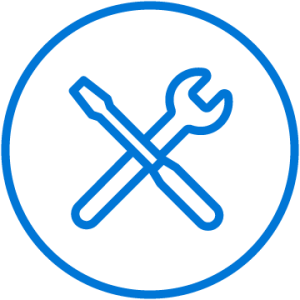Intake
The VA's Software Factory Model (SWF) combines advanced tools and innovative methods to deliver fast, innovative, and secure software solutions, enhancing severices for our Veterans. The model ensures a superior software delivery experience rooted in our promise of being better, faster, and safer.

Play Decisions
Commodity, Customized Commodity, or Highly Differentiated

NOTE: Deciding on the right play mirrors the act of picking the optimal tool for a job. By aligning the project's needs with the most fitting play, the SWF Model ensures streamlined, effective, and efficient software development, always keeping VA's strategic goals at the forefront.

Intake Resources
All links require PIV or CAG access.
Simplifying Software Delivery with a Centralized Intake Process
| Historical Challenges | SWF Solutions |
|---|---|
Fragmented Approach | Centralized Intake Process: Single, consolidated intake process that eliminates confusion and provides efficient pathways for submitting and managing software requests |
Siloed Information | Improved Collaboration and Visibility: Centralized approach fosters collaboration and improves visibility by breaking down information silos |
Slowed Delivery and Limited Agility | Faster and Agile Delivery: SWF leverages existing solutions, such as SaaS and PaaS factories, to accelerate product delivery, reduce development time, and improve agility |
Inability to Quickly Respond to Changing Needs | Modernization and Flexibility: SWF enables the integration of new technologies and capabilities, facilitating modernization efforts and enhancing flexibility to adapt to changing needs |
Inconsistent User Experience | Enhanced User Experience: SWF focuses on delivering value to customers, ensuring a consistent and improved user experience through standardized practices and the adoption of best-in-class tools and technologies |
Frequently Asked Questions
Do you have a list of solutions in your inventory that you look at when you get a software request? If so, is that list public?
The Integrated Intake Team reviews the requirements against the current programs on the VA network and those outside as well. The input used to provide a play recommendation, not a specific solution, is derived from several repositories: Software as a Service (SaaS)/Platform as a Service (PaaS) Marketplace, Commercial Off-the-Shelf (COTS) products available, and Low Code/No Code (LC/NC) options. There is not one consolidated list available to choose play recommendations from.
Do customers need to use the Software Product Management (SPM) software intake process now instead of going directly to VA Enterprise Cloud (VAEC) or VA Platform One (VAPO)?
SPM’s goal is to streamline the intake process for all requests to a single point of entry. We are working through the details to provide that consolidated, single front door; however, we have not reached that level of maturity and are focused on new Software Requests only for now. As we continue to fold in the additional IT services, we will provide updates to the process as additional services become available through ServiceNow.
Does the Software Factory (SWF) replace SPM teams for delivering and managing products?
Rather than replacing SPM teams for delivering and managing products, the SWF model provides a framework that leverages SPM resources to deliver products using a standardized set of criteria, tools, teaming, processes, and metrics. The SWF strategy seeks to deliver better, faster, and safer software by aligning each SWF to a key play decision and ensuring that the delivery modality is optimized to the user's needs. SPM teams work within the SWF Model to deliver and manage these products.
